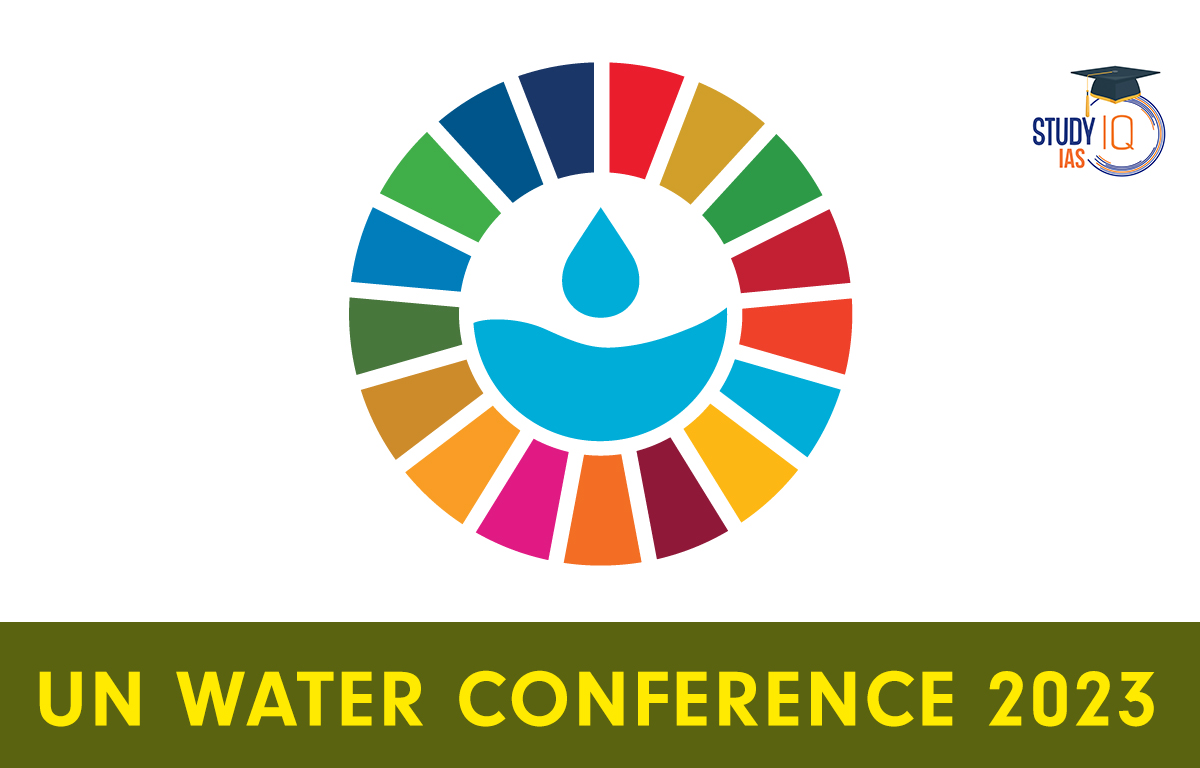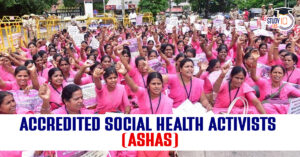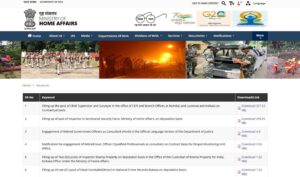Table of Contents
Context: Recently, the United Nations (UN) 2023 Water Conference in New York culminated with a breakthrough response to the global water crisis, with governments, businesses and civil society committing billions of dollars to advance the water agenda.
UN Water Conference 2023 Background
- Global water crisis: Recently published ‘UN World Water Development Report 2023’ drew attention to the water crisis that is being experienced around the world.
- Global: Globally, two billion people do not have access to safe drinking water and 3.6 billion lack access to safely managed sanitation.
- India: 80% of people living under water stress lived in Asia; in particular, northeast China, as well as India and Pakistan.
- Urban water scarcity: The global urban population facing water scarcity is projected to increase from one-third (2016) to nearly half of the global urban population in 2050, with India projected to be the most severely affected.
- What is the Water Conference?
- It is a global conference organized by the UN to bring together experts, policymakers, and other stakeholders to discuss water related issues.
- The UN Water Conference 1977: It was held in Mar del Plata, Argentina. The conference was the first of its kind to focus specifically on water-related issues.
- Mar del Plata Action Plan: The conference resulted in the adoption of the Mar del Plata Action Plan, which outlined a series of recommendations for improving access to safe drinking water and sanitation and promoting sustainable water management.
- This has led to several decades of global funding and concerted effort to lower the population without access to safe drinking water.
- The UN Water Conference 2023: It marks the first such summit on water in the past 46 years.
- It took place at UN Headquarters in New York. It was co-hosted by Tajikistan and the Netherlands.
- The conference coincided with the mid-term comprehensive review of the ‘UN Water Action Decade 2018-2028’.
About the UN Water Action Decade 2018-2028
- The UN proclaimed the Water Action Decade at the 66th General Assembly to address global challenges associated with access to water.
- The UN Water Action Decade started on 22 March 2018 and ends on 22 March 2028. It pursues two main goals:
- To improve knowledge sharing related to water and water pollution control, including information on the water-related SDGs.
- To improve communication to achieve the water-related
What are the Key Outcomes of the UN Water Conference 2023?
- Water action agenda: As part of the agenda, there were 713 voluntary commitments made by philanthropists, governments, corporations, and NGOs to deal with the global water crisis.
- They included a $50-billion commitment from the Indian government to improve rural drinking water services under its Jal Jeevan Mission.
- Climate resilient water and sanitation infrastructure: USA announced a commitment of up to $49 billion in investments to support climate resilient water and sanitation infrastructure and services.
- Quality Infrastructure: Japan announced that it will contribute 500 billion yen to the solution of water-related social issues faced by the Asia-Pacific region by developing quality Infrastructure.
- River basins management and clean running water: Vietnam pledged to develop policies for major river basins management by 2025 and clean running water by 2030.
- Africa’s water investments gap: The African Union Commission and Continental Africa Investment Programme (AIP) aims to close Africa’s water investments gap by mobilizing at least $30 billion per year by 2030.
- European Union (EU): The EU aims to support 70 million individuals to an improved drinking water source and sanitation facility by 2030.
- Water Convention and transboundary cooperation: Switzerland submitted 5 commitments in the areas of Water Convention and transboundary cooperation.
Key Government Initiatives and Programs for Water Resource Conservation and Management
| Atal Bhujal Yojana | It is a Central Sector Scheme and partially funded from World Bank. It seeks community participation and demand side interventions for sustainable ground water management. |
| PM Krishi Sinchayee Yojana (PMKSY) | It is a centrally sponsored scheme to enhance physical access of water on farm and expand cultivable area under assured irrigation, improve on-farm water use efficiency, introduce sustainable water conservation practices, etc. |
| Atal Mission for Rejuvenation and Urban Transformation (AMRUT) | To develop basic infrastructure, in the selected urban areas, across sectors of water supply; storm water drainage; green spaces and parks; sewerage and septage management; and non-motorized urban transport. |
| Jal Shakti Abhiyan | It promotes water conservation and water resource management by focusing on rainwater harvesting, renovation of traditional water bodies, and intensive afforestation and watershed development. |
| Mission Amrut Sarovar | It focuses on a target to construct or rejuvenate 50,000 Amrit Sarovar ponds across India, with an objective of promoting sustainable use of water. |
| Sahi Fasal campaign | It is an awareness campaign with the objective of weaning away the farmers from growing water intensive crops and using micro-irrigation techniques to increase water use efficiency in agriculture. |


 Accredited Social Health Activists (ASHA...
Accredited Social Health Activists (ASHA...
 World’s 1st Unique Q-Shield Platform a...
World’s 1st Unique Q-Shield Platform a...
 IB ACIO Recruitment Notification 2025 Ex...
IB ACIO Recruitment Notification 2025 Ex...





















